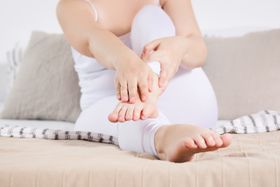How to Determine Your Arch Height at Home
Your arch height affects your body mechanics and foot health. The earlier you understand it, the better. Find out how to determine your arch height at home.
Updated February 10, 2023
Your arch height affects your foot health and your overall body mechanics. While a regular arch height is slightly elevated above the ground when standing, you may also have high arches or flat feet.
Generally, high arches are less common than flat feet, occurring in only about 20% of the population. You have high arches if there’s a significant distance between your foot arch and the floor when you stand or walk.
High arches can cause serious foot problems ranging from minor discomfort to deformities. These include ankle instability, calluses, claw toes, hammertoes, metatarsalgia, plantar fasciitis, and sprains.
Ways to Test Your Arch Height
The earlier you understand what kind of arch height you have, the better you’ll know how it affects your body and how to handle it. You can determine your arch height by performing the wet test.
Begin the wet test by dipping your feet in water in either a basin or a tub. Then, you will step out onto cardboard, concrete, or heavy paper and observe your footprint.
You have a normal arch if the middle part of your arch is about half filled. You have a flat arch if your entire sole is visible on the imprint. Conversely, if the heel and the toe area are the observable points, you likely have high arches.
Comfort Is Possible Despite Foot Arch Type
No matter your arch type, comfort is possible with the appropriate arch support. A low arch height insole will support and provide comfort for flat feet. Regular feet go with the medium arch insoles, while a high arch will require a high arch insole. Beyond this, if your foot arch type causes pain, stretching the arch of your foot can also provide significant relief.
» Discover different ways to make the best 'at home' custom orthotics
Related Articles

Conservative and Invasive Treatments for Flat Feet
Janik Sundstrom
December 17, 2024

Overpronation vs. Underpronation: Similarities and Differences
Babafemi Adebajo
February 15, 2023

Why You Should Wear Insoles if You Spend All Day in Work Boots
Janik Sundstrom
December 9, 2024

Corns vs. Bunions: Similarities and Differences
Janik Sundstrom
January 30, 2024

5 Best Foot Supination Exercises: Enhance Stability
Upstep Staff
January 21, 2025
Related Posts
Babafemi Adebajo
Do You Need Arch Support if You Have High Arches?
Babafemi Adebajo
How to Relieve Foot Pain From High Arches
Staff Writer



